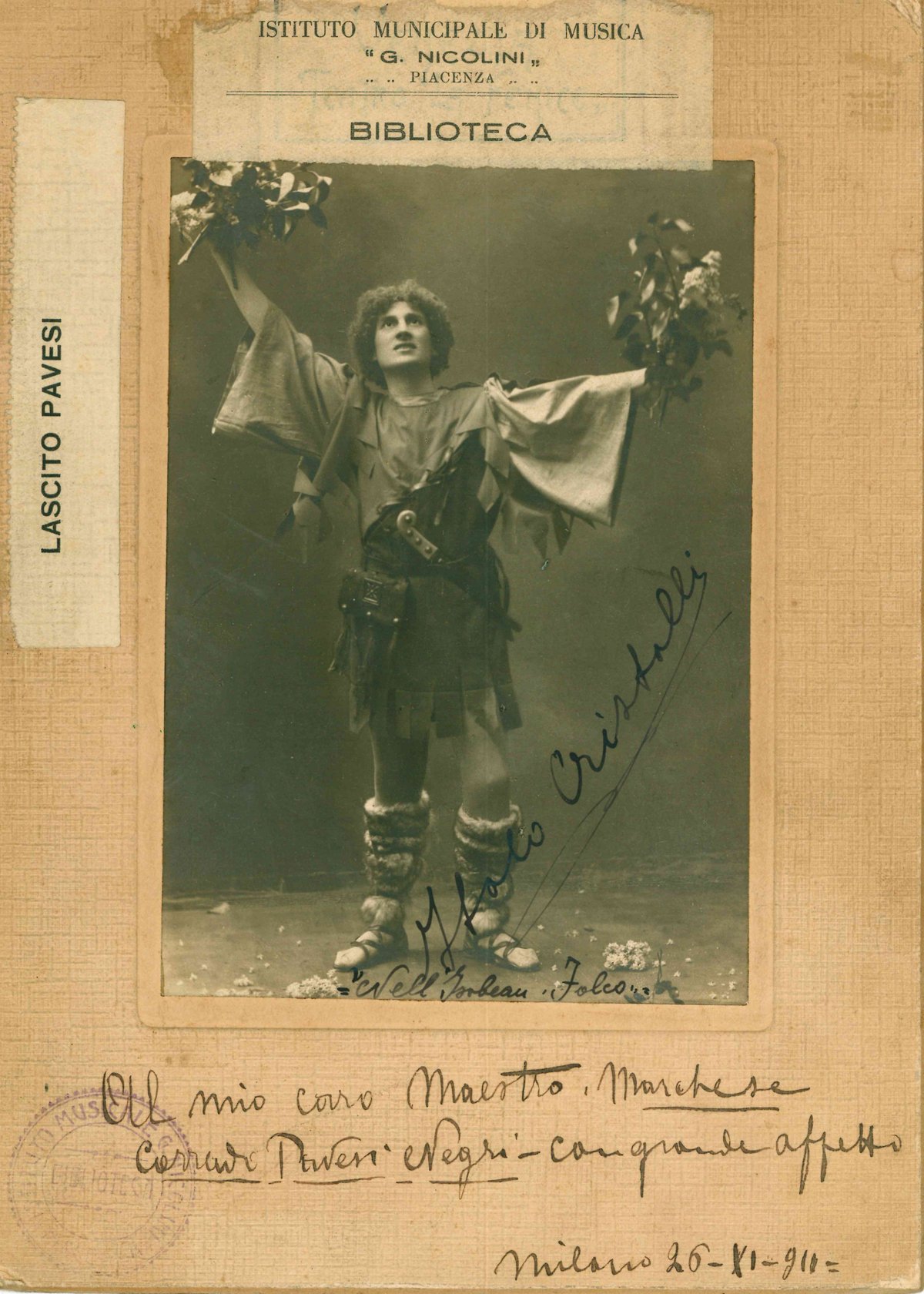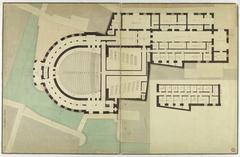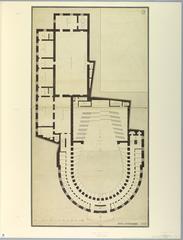
Teatro La Fenice Venice: Visiting Hours, Tickets, and Historical Significance
Date: 14/06/2025
Introduction
Teatro La Fenice, nestled in the heart of Venice, is one of Italy’s most celebrated opera houses and a symbol of the city’s enduring artistic spirit. Aptly named “The Phoenix,” La Fenice has risen from the ashes after devastating fires, embodying resilience and the perpetual rebirth of Venetian culture. This guide provides comprehensive information for visitors—including history, visiting hours, ticketing, accessibility, and practical tips—to help you make the most of your experience at this architectural and cultural treasure (ilcenacolosf.org, teatrolafenice.it).
Table of Contents
- History and Origins
- Architecture and Interior Highlights
- Fires, Reconstructions, and The Phoenix Legend
- Role in Opera History
- Visiting Hours and Location
- Tickets and Tours
- Accessibility and Amenities
- Dress Code and Visitor Tips
- Nearby Attractions
- Frequently Asked Questions (FAQ)
- Plan Your Visit
- Summary and Recommendations
- Sources and Further Reading
History and Origins
Teatro La Fenice was founded in 1792 after the previous main opera house, Teatro San Benedetto, was destroyed by fire. The Nobile Società di Palchettisti (Noble Society of Box Holders) commissioned a new theater to restore Venice’s cultural prominence. Architect Gianantonio Selva’s neoclassical design was chosen, and the theater debuted with Giovanni Paisiello’s “I Giochi d’Agrigento.” The name “La Fenice”—the Phoenix—was selected to symbolize rebirth and resilience (ilcenacolosf.org, thevenicepass.com).
Architecture and Interior Highlights
La Fenice’s architecture is an elegant blend of neoclassical and Empire styles. Its understated façade features symmetrical columns and classical motifs, while the horseshoe-shaped auditorium dazzles with gilded stucco, plush red velvet, and a grand chandelier (veniceinsiderguide.com, Life in Italy). Five tiers of boxes surround the orchestra stalls, and the royal box from the Napoleonic era underscores the theater’s noble heritage. The Sale Apollinee, or Apollonian Rooms, are lavish salons used for receptions and exhibitions, including a permanent Maria Callas exhibit.
The 2003 restoration after the 1996 fire was led by architect Aldo Rossi, who integrated modern stage technology and safety systems while recreating the original decorative schemes (Venice Guide). The result is a harmonious marriage of historic grandeur and contemporary performance capabilities.
Fires, Reconstructions, and The Phoenix Legend
La Fenice’s name is a testament to its history. The theater was first destroyed by fire in 1836 and rebuilt within a year. In 1996, another fire caused extensive damage, prompting a meticulous seven-year restoration that returned La Fenice to its 19th-century splendor (teatrolafenice.it). This cycle of destruction and renewal has made La Fenice a powerful symbol of Venetian perseverance (thevenicepass.com).
Role in Opera History
La Fenice has played a pivotal role in the evolution of Italian opera, premiering works by legendary composers:
- Gioachino Rossini: “Tancredi” (1813), “Semiramide” (1823)
- Vincenzo Bellini: “I Capuleti e i Montecchi” (1830)
- Gaetano Donizetti: “Belisario” (1836)
- Giuseppe Verdi: “Ernani” (1844), “Rigoletto” (1851), “La Traviata” (1853)
Verdi’s “La Traviata” is particularly significant, continuing to captivate audiences worldwide (ilcenacolosf.org). La Fenice’s reputation for artistic excellence has attracted talent from across Europe, ensuring its stature as a premier opera venue (teatrolafenice.it).
Visiting Hours and Location
- Tours: Daily from 10:00 am to 6:00 pm (hours may vary, especially during performances or special events—confirm on the official website).
- Ticket Office: Open daily 10:00 am–5:00 pm.
- Performances: Usually held in the evenings; check schedules online.
Address: Campo San Fantin, 1965, 30124 Venice
La Fenice is within walking distance of the Rialto Bridge and St. Mark’s Square. The nearest vaporetto stops are Santa Maria del Giglio and Rialto (fascination-venice.com).
Tickets and Tours
Ticket Purchase Options
- Official Website: Teatro La Fenice
- Trusted Vendors: ArteConcerto, Venice Opera Tickets
- In Person: Box office or Venezia Unica ticket offices (teatrolafenice.it)
Ticket Categories and Pricing
- Opera Performances: €30–€150+ depending on seat and event.
- Guided Tours: €10–€20 for adults, discounts for students/seniors.
- Children under 6: Free entry for tours (venicevisitpass.com).
- Last-Minute Tickets: Limited discounts available at the box office before performances.
Tours
- Self-Guided: Audio guides (seven languages) included with tour tickets; bring a valid ID for rental (letterstobarbara.com).
- Guided Group Tours: Available for groups of 12+ with advance booking (teatrolafenice.it).
- Private Tours: Available for a personalized experience (approx. €25 per person).
Accessibility and Amenities
La Fenice is fully committed to accessibility:
- Wheelchair Access: Elevator on Calle de La Fenice, accessible restrooms, and staff assistance.
- Advance Notification: Recommended for special accommodations (phone: +39 041 786511).
- Ticketing: Guests with 100% disability pay full price; their companion enters free (teatrolafenice.it).
- Facilities: Bookshop, café (10:00 am–4:00 pm), cloakroom, modern restrooms, and audio guides.
Dress Code and Visitor Tips
- Dress Code: Smart casual for tours; formal attire for evening performances and galas (teatrolafenice.it).
- Photography: Allowed during tours (no flash); strictly prohibited during performances.
- Arrival: Arrive 20–30 minutes early for security and seating.
- High Tide (Acqua Alta): Check tide forecasts; bring boots if water exceeds 100 cm (teatrolafenice.it).
- Conduct: Eating, drinking, and use of flash inside the auditorium are prohibited.
Nearby Attractions
- St. Mark’s Basilica: Byzantine mosaics and history, minutes away.
- Doge’s Palace: Political and artistic history of Venice.
- Accademia Gallery: Venetian Renaissance masterpieces.
- Campo Santo Stefano: Vibrant cultural square.
- Taverna La Fenice: Elegant dining next to the theater.
- The Merchant of Venice: Boutique for authentic Venetian gifts.
Frequently Asked Questions (FAQ)
Q: What are La Fenice’s visiting hours?
A: Tours typically run 10:00 am–6:00 pm; check the official website for updates.
Q: How do I buy tickets?
A: Online via the official site or trusted vendors, or in person at the box office.
Q: Is La Fenice wheelchair accessible?
A: Yes, with elevator access and accessible facilities; notify in advance for assistance.
Q: Are audio guides and guided tours available?
A: Yes, audio guides in seven languages; guided group and private tours can be pre-booked.
Q: What is the dress code?
A: Smart casual for tours; formal attire for evening performances and gala events.
Q: Can I take photographs inside?
A: Non-flash photography permitted during tours, not during performances.
Plan Your Visit
- Check schedules and availability on the official website.
- Book tickets in advance for performances or tours, especially during peak seasons.
- Download the Audiala app for expert audio guides and real-time updates.
- Follow La Fenice on social media for news and special offers.
- Combine your visit with other Venice cultural sites for a complete experience.
Summary and Recommendations
Teatro La Fenice is a living testament to Venice’s artistic legacy, seamlessly blending historic grandeur and modern comfort. From its neoclassical architecture and world-renowned acoustics to its accessible visitor services and vibrant cultural programming, La Fenice promises an unforgettable visit (thevenicepass.com). Plan ahead, secure your tickets, and immerse yourself in the magic of Venetian opera and heritage.
Sources and Further Reading
- This is a sample text. (ilcenacolosf.org)
- This is a sample text. (Life in Italy)
- This is a sample text. (teatrolafenice.it)
- This is a sample text. (veniceoperatickets.com)
- This is a sample text. (veniceinsiderguide.com)
- This is a sample text. (thevenicepass.com)














































































































